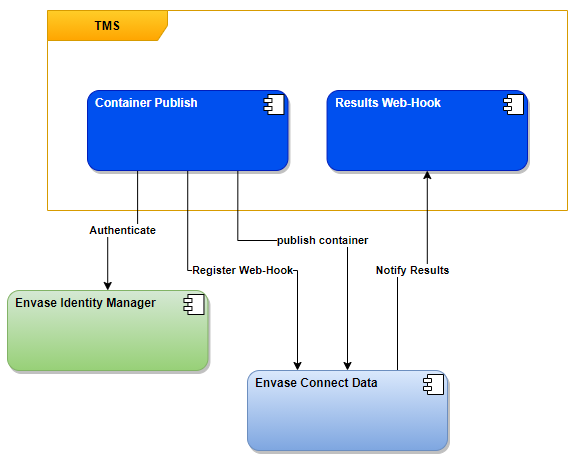Integrating Envase Trace Overview
This guide describes what Envase TMS applications need to do to integrate the Envase Trace service to trace containers. The service has been designed in a way in which no matter where the information is coming from, all the results are normalized to represent the information in the same way.
The goals of the service is that once a TMS has integrated with the service, all the providers will be supported by the TMS. This brings feature parity to all Envase TMS applications.
There are basically two components that every TMS will have to implement. The first component should authenticate and authorize with Envase Identity Manager to retrieve an access token that will be used to register a Web-Hook for notifications and to publish the containers. The second component is the service registered as a Web-Hook that will listen to notifications for results.
The following diagram shows the architecture:

The Container Publish component should authenticate and authorize with Envase Identity Manager as explained in the Authentication/Authorization topic. Once an access and refresh token is retrieved, the component should register the Web-Hook that will listen to notifications. More information about how to register the Web-Hook is provided in the Register Web-Hook topic.
The Results Web-Hook component is a service that exposes an HTTPS endpoint where notifications will be sent for processing. Each individual TMS application will process the information according to their business logic.
Once the Web-Hook is registered, the TMS can publish containers to be traced. The Publish Container topic provides details on how the requests to Envase Connect Data works, so that containers are published for tracing.
The Envase Trace service will do an initial trace when a container is published. The container will be traced again at a pre-determined intervals calculated from status of the latest results. Each time new results are retrieved for the container, the TMS will be notified of those results through the registered Web-Hook.